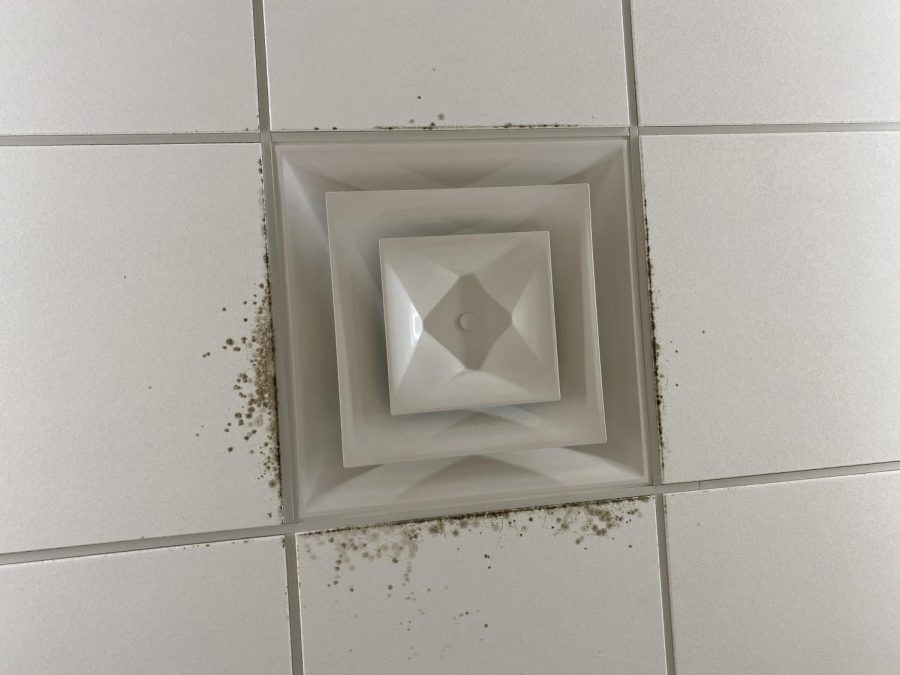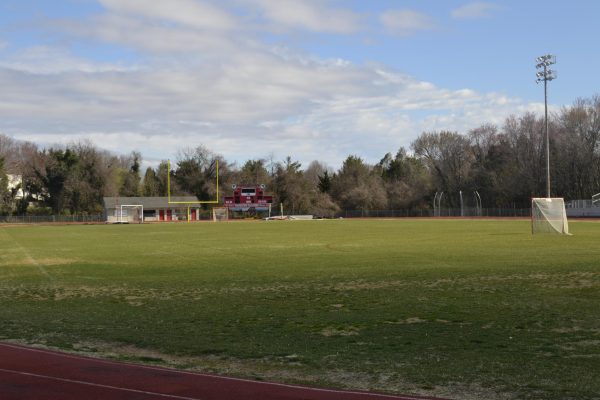Black and Green Ceiling Spots: Mold Possibility at FHS
Black and green spots have appeared around the vents in government teacher David Smith’s classroom, room 210.
The appearance of black and green spots on the ceiling has been seen by Falconer staff on all four floors of the main building, in the cube, and in the annex. In an interview with Principal Kraig Kelican, he said that he was aware of the concerns for mold within the school. Kelican said that a specialist on the FCPS1 staff has done testing on some of the areas that appear to be moldy, and most have tested negative for mold.
Kelican explained that there was mold found in one classroom on the first floor. “… when we came back from summer break it had a lot of mold or black stuff around. [The specialist] did test that; it was a combination of mold and dirt,” said Kelican. He stated that there was a malfunctioning AC unit which allowed for excess humidity. The excess humidity in the room allowed for mold growth.
Kelican said, “… they have since repaired that unit and are replacing all of the ceiling tiles and they’ve sanitized and wiped down with I guess an anti-fungal or whatever they call that stuff.” Kelican confirmed that the classroom on the first floor that tested positive for mold was chemistry teacher Jacob Preli’s room. Preli declined to be interviewed regarding his classroom.
Kelican said that the green and black stains on the ceilings of many FHS classrooms are in fact dust and dirt, not mold. Kelican said, “So what has happened is, depending on the weather and whether it is dusty or whatever, the filters eventually either get full or they fail or the fact that it’s just overwhelmed with dust, particularly when it’s bringing in fresh air from outside to control humidity.” Kelican reassured that “what gathers around them is dust. It looks like dirt, it looks like mold.”
Kelican said that when areas are dirty and have tested negative for mold, they are cleaned “the best they can.” He continues, “… it doesn’t always get it all the way off. We try to replace the ceiling tiles so they’re clean and not the older ones. Sometimes we don’t get to them.”
Kelican stated that the issue is localized to specific classrooms and when there is a concern, it is tested to ensure the safety of the students and staff. “To my knowledge, everything in the building is legit. It doesn’t look the best, but it’s not mold. And anytime we suspect that we call over and have them come over right then and they do testing and we’ll clear the room.” Kelican states that some spots of suspected mold have been tested “as recently as August.”
The worst black ceiling stains that The Falconer staff discovered were found in the annex between rooms 815 and 816. In response to being shown images of the ceiling in that area, Kelican said,“If you can tell me where that is, I’ll have somebody take care of it.” Within a week of bringing the stains in the annex to Kelican’s attention, the area was cleaned.
Government teacher David Smith is concerned about the possibility of mold within his classroom. “It seems like it might be getting a little bit worse,” said Smith. When Kelican was presented with images of the black and green spots on the ceiling of Smith’s classroom, room 210, he said, “I’ll put it in to have it tested. I didn’t know about that one, but I’ll put that in.”
If mold is present in FHS, it could pose a threat to students’ health. According to the CDC, mold exposure can cause sickness, especially in those with asthma and allergies. In a report from the WHO it is stated that, “Indoor air pollution – such as from dampness and mold, chemicals and other biological agents – is a major cause of morbidity and mortality worldwide.”
This is a developing story; read the next one here.
Thanks for reading The Falconer. We're happy to provide you with award-winning student journalism since 1963, free from bias, conflicts of interest, and paywalls. We're able to continue with the generous support of our local community. If you're able, please consider making a donation. Any amount is incredibly helpful and allows us to pursue new and exciting opportunities.




